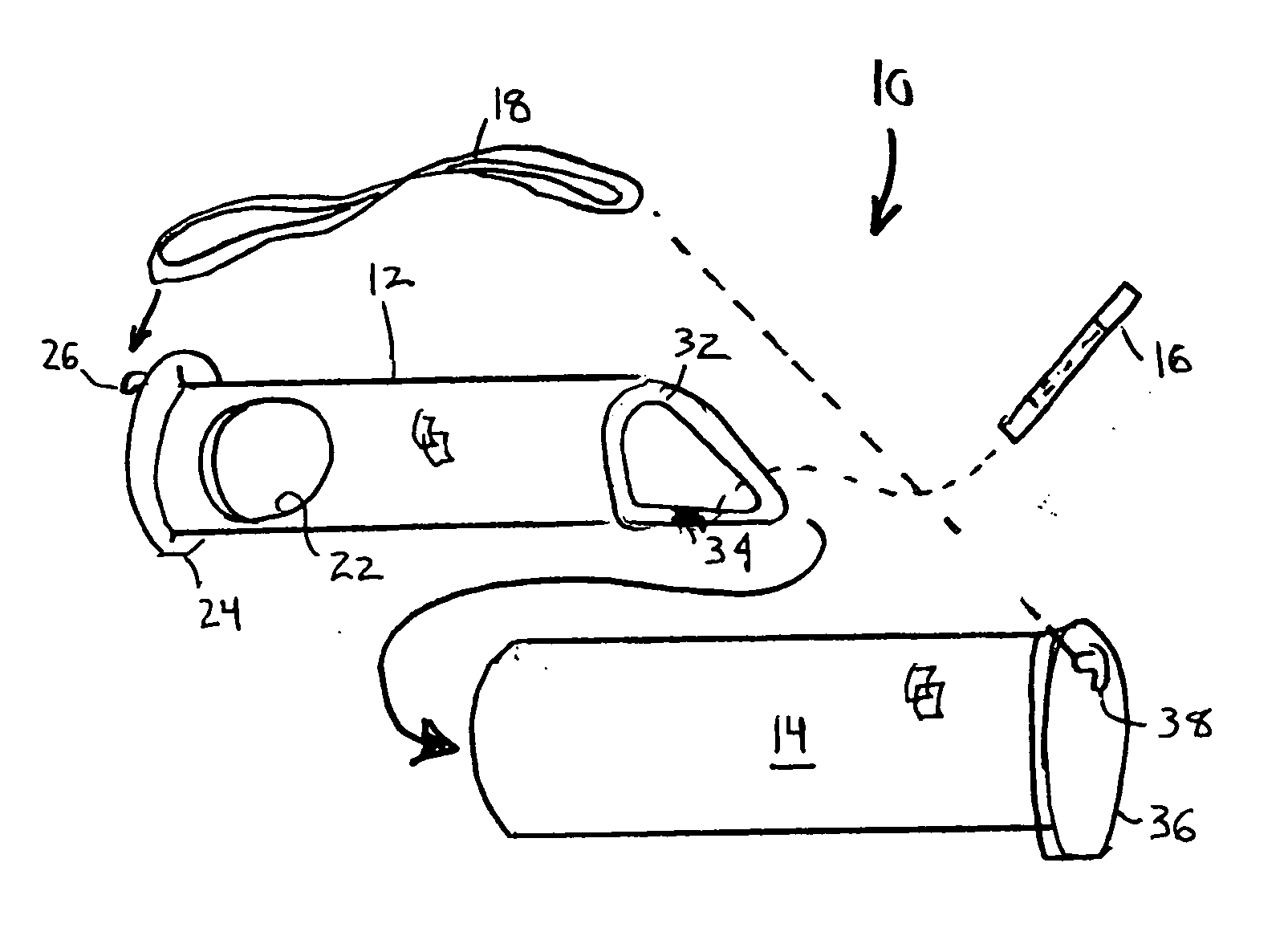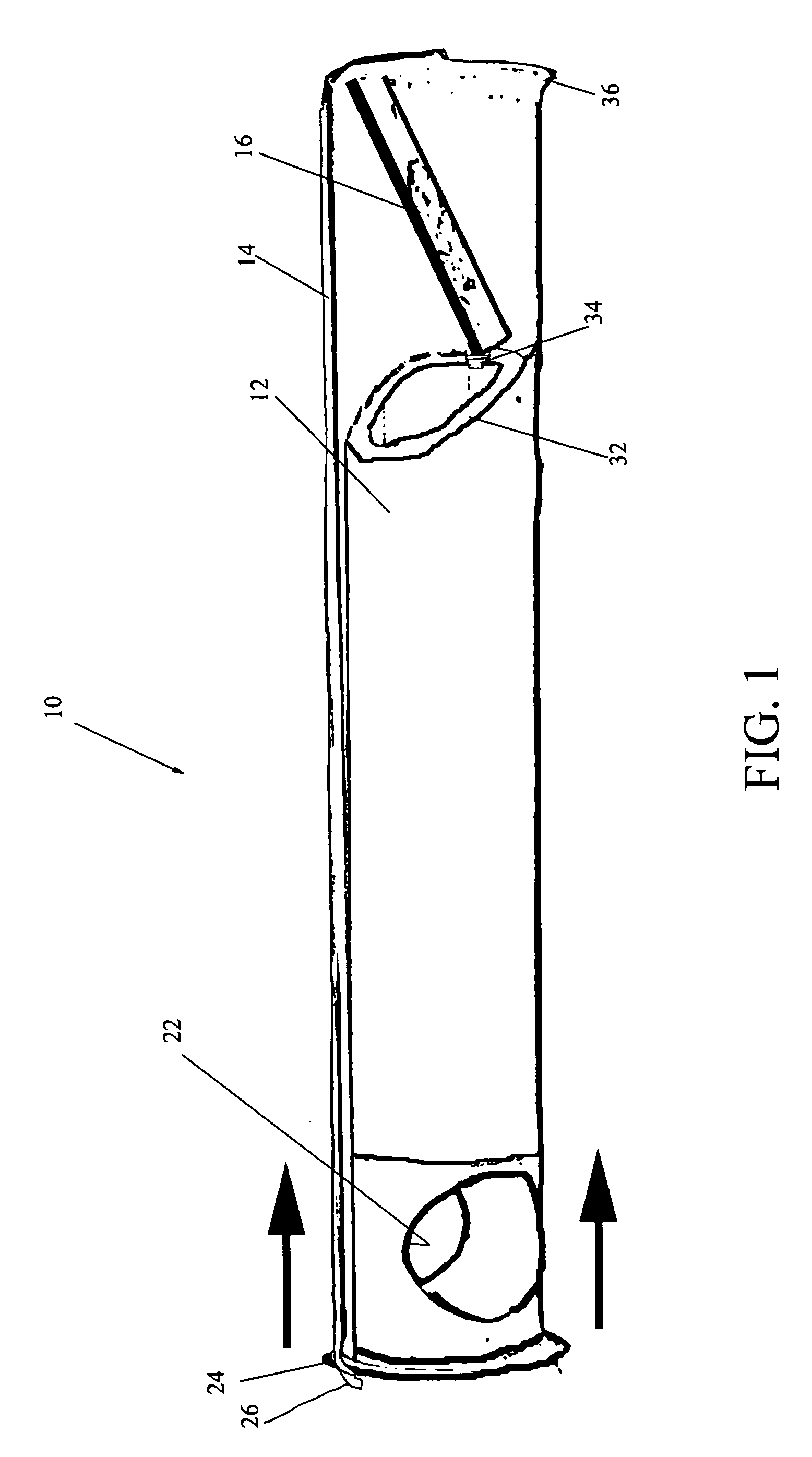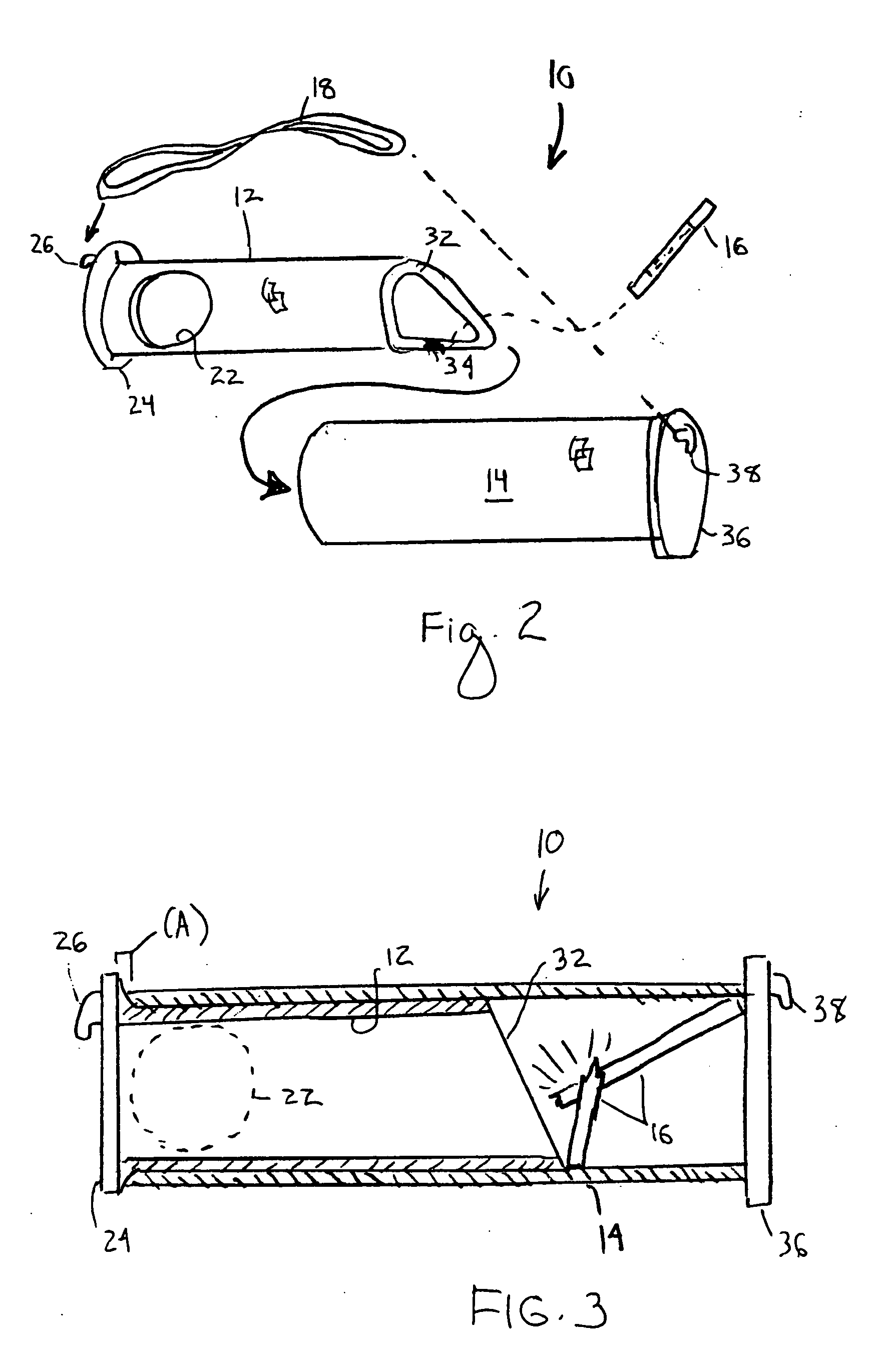Pathogen proof rodent trap
- Summary
- Abstract
- Description
- Claims
- Application Information
AI Technical Summary
Benefits of technology
Problems solved by technology
Method used
Image
Examples
Embodiment Construction
[0027]FIG. 1 is a side perspective view of a sterile and humane rodent trap 10 according to a first embodiment of the present invention. The rodent trap 10 generally comprises an outer tubular member 14 that is open and one end and closed at the other, a telescoping inner tubular member 12 open at one end and closed at the other, with at least one entrance aperture 22 for the rodent near the closed end, a biasing member 18 coupled to both the inner tubular member 12 and outer tubular member 14 and adapted for compressing the two together to complete the trapping action, and a break-away bait stick 16 by which a rodent initiates the trapping action. In use, the bait stick 16 is loaded by lodging between the corner at the closed end of the outer tubular member 14 and the edge of inner tubular member 12 as shown (the bait stick 14 may be pre-loaded as such at the place of manufacture), and then coupling the biasing member 18 between the inner tubular member 12 and outer tubular member ...
PUM
 Login to View More
Login to View More Abstract
Description
Claims
Application Information
 Login to View More
Login to View More - R&D
- Intellectual Property
- Life Sciences
- Materials
- Tech Scout
- Unparalleled Data Quality
- Higher Quality Content
- 60% Fewer Hallucinations
Browse by: Latest US Patents, China's latest patents, Technical Efficacy Thesaurus, Application Domain, Technology Topic, Popular Technical Reports.
© 2025 PatSnap. All rights reserved.Legal|Privacy policy|Modern Slavery Act Transparency Statement|Sitemap|About US| Contact US: help@patsnap.com



